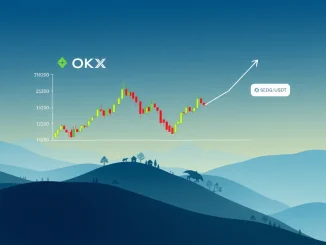
The cryptocurrency market is always abuzz with activity, and one of the most closely watched phenomena is the movement of large holders, often referred to as crypto whales. These entities hold vast amounts of digital assets, and their trading actions can significantly influence market dynamics and Ethereum price.
What’s Behind This Massive ETH Whale Sale?
Fresh on-chain data has revealed a notable transaction involving a significant Ethereum holder. An address previously identified for offloading 15,000 ETH just yesterday has made another substantial move. This address sold an additional 35,754 ETH, valued at approximately $64.13 million in USDT, over the past couple of hours.
This recent transaction follows closely on the heels of yesterday’s activity. Combined, the ETH whale has sold a staggering 50,754 ETH within a 17-hour window. The total value of these combined sales amounts to roughly $89.03 million.
According to analysis shared by @EmberCN on X, these sales were executed at an average price of $1,754 per ETH. Such large-scale liquidations by a single entity are closely monitored by traders and analysts alike, as they can signal potential shifts in market sentiment or supply dynamics.
Why Do ETH Whale Movements Matter for Ethereum Price?
The actions of large holders like this ETH whale are crucial indicators for several reasons:
- Supply Shock: Selling tens of thousands of ETH injects significant supply onto exchanges, which can put downward pressure on the Ethereum price, especially if demand doesn’t absorb the volume quickly.
- Market Sentiment: Large sales can be interpreted by other market participants as a lack of confidence or a signal to take profits, potentially triggering further selling pressure.
- Liquidity: While large sales can impact price negatively, they also provide liquidity to the market, allowing other traders to buy or sell large quantities.
Monitoring on-chain data provides transparency into these large movements, offering insights that are not always immediately apparent on exchange order books alone.
How Can On-Chain Data Help Track Crypto Whales?
Tracking crypto whale activity relies heavily on analyzing public blockchain ledgers. On-chain data platforms allow analysts to:
- Identify addresses holding significant amounts of cryptocurrency.
- Monitor inflows and outflows from these addresses to exchanges.
- Track transactions between large addresses.
- Estimate average purchase or sale prices based on transaction history.
This information helps piece together the potential strategies of large holders and anticipate their possible impact on assets like Ethereum.
What’s Next After This Massive ETH Sale?
Following this significant ETH sale, market participants will be watching closely. Key areas of focus include:
- Whether the whale continues to sell or holds the remaining balance.
- How the market absorbs this supply – does the price hold, drop further, or recover?
- Other large transactions on the Ethereum network.
While one whale’s actions don’t solely determine the market direction, they are a piece of the larger puzzle that influences short-term volatility and sentiment surrounding the Ethereum price.
Conclusion: Keeping an Eye on the Big Players
The recent actions of this ETH whale, offloading over $89 million worth of Ethereum in less than a day, underscore the potential influence of large holders in the crypto market. Utilizing on-chain data provides crucial transparency into these movements, helping traders and investors understand potential supply shifts and market sentiment. While such a large ETH sale can create short-term pressure, the long-term trajectory of Ethereum price depends on a multitude of factors beyond individual whale activity. Staying informed about these large transactions remains vital for navigating the dynamic world of cryptocurrency.



